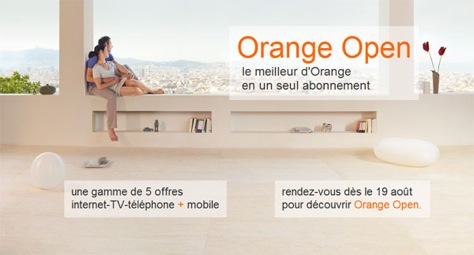Désolé, cet article est seulement disponible en Anglais Américain. Pour le confort de l’utilisateur, le contenu est affiché ci-dessous dans une autre langue. Vous pouvez cliquer le lien pour changer de langue active.
It has always been a mystery to me why security vendors like Verimatrix always seem to punch above their weight in the pay-TV business. If you look at other value chains, beyond the content industry, stakeholders are credited with a relative importance directly proportional to their financial standing yet Verimatrix has even more mind-share than market-share.
During IBC this year, Steve Christian set me straight and gave me a glimpse into Verimatrix’ future, opening a world of possibilities for the Pay-TV security industry. It was a humbling “why on earth hadn’t I realized that before?” moment.
I was completing a small scouting project on cross-media content recommendation (expect a post soon on this) when we met last month, so I started by picking Steve’s brain on this topic.
A critical mass of users is required before an operator can map behaviour and usage patterns. You need lots of users to get a great service, but you need a great service to get any users. The end game is to understand the patterns of content consumption.
The problem is not only theoretical. Like all Telco’s, the one I worked for was very proud of owning precious customer data. Huge data mining projects on months-old data was the only use that data usually got. TiVo is an exception in collecting data used in almost real time.
Steve’s first point was that CAS and DRM vendors are already in the right place to transparently capture the critical real-time subscriber intelligence needed to deliver a recommendation service.
In their just-released white paper (Arming Digital TV Operators with Real-Time Subscriber Behavior and Usage Data), Verimatrix quaintly call this enabling Progress and Profit. C’mon Steve, these things always come in threes, so what’s it going to be: Profiling for Progress & Profit? Hmm not so quaint, because that’s where there’s still an unresolved issue: privacy. That’s the nice thing about white papers; you can skip the tricky bits.
If privacy does prove difficult, it could however be handled in a very transparent way. The whole recommendation concept requires transparency. People need to know why they are being recommended something to willingly make more personal information available.
The hard part to fix, in getting recommendation to work well, is collecting and understanding user data collected implicitly or explicitly.
Of course understanding the content metadata and classifying all the movie genres TV programs and whatever other content available, isn’t trivial either. This is no longer a real issue as there are now dozens of companies out there with variations on semantic analysis and other approaches with which to do this. Many of the algorithms are even available as open source. Suppliers range from TV specialists like TV Genius, bee TV or Orca to web-based solutions like hunch.com, with people like Jinni somewhere in between. Of course, if you want to build a solution from scratch there are also some pure-players in the algorithm side like Think Analytics.
But all these solutions amount to nothing if you can’t get access to significant user transactions. That is why Verimatrix can solve one of the hardest parts of the problem in a more timely way than many of the above-mentioned vendors.
I didn’t discuss with Steve whether Verimatrix would be looking to develop such features, but the company’s track record suggests they are more likely to partner with whoever is best in class in this area.
Once you able to intervene in, or just under the TV, there are at least two other key areas you can intervene on: Quality management and social networking.
The burden of managing the quality of experience with an ever-increasing range of devices, and with a broadening scope of features and services, is becoming difficult to bear for operators. Some standards like TR-069 have at last emerged for basic requirements like firmware upgrades, but no standardized solutions are available for managing more advanced issues such as monitoring the service delivered.
After many years of caution, focussed on the risk of devices creating a storm of traffic if they all had the same issue to report at the same time, even the big safety-conscious Telcos are looking to deploy agents into both their STB and their home gateways.
Whether using a standard like TR-135, or as-yet proprietary products from the likes of Agama, Mariner, Witbe or Cisco, operators actively engaging in monitoring will develop a dynamic view of how services are being delivered into people’s homes. These operators will find themselves in a position to initially deliver services with a higher quality of experience and eventually deliver even better services altogether.
But the main issues operators have encountered, with embedded monitoring has been software integration. Vendors promise trivial two-week integration efforts, but this has often dragged on to yearlong projects. Here again the CAS vendors come up with a trump card: they are already integrated with all the end devices, that is: connected TVs, STBs, Tablets, smart phones and of course PCs.
But another angle Steve Christian developed was that CAS vendors are already doing monitoring. They maintain and monitor the security of pay-content. Extending from traditional pay-content to other types of content is not necessarily a huge step to take. As anyone who’s dared to get their hands dirty with something like wireshark (this is a free network protocol analysis tool) will know, there is almost no technology barrier to getting to grips with quality metrics like packet loss or network jitter. The most important metric of all is service availability that security vendors are in a prime position to report on.
Working in an ecosystem is part of a security vendor’s daily routine. To improve the quality of experience of the end user, security vendors could easily partner, say, with an EPG meta-data provider like Rovi to ensure that the right data is available at the right place at the right time. They could also use one of the EPG quality specialists like EPGenius to add value to the EPG data by analysing it, correcting discrepancies and adding things like missing series links.
The third point Steve Christian mentioned was Social networking. We didn’t really get into any details here. We were running out of time, but also the business case isn’t so compelling. Verimatrix can enable better Social-TV implementation, but I don’t yet see any clear path to market. I do believe the Social TV will be a reality soon (see my blog here). It is not yet clear who will prevail. The most compelling demos are multi-screen with the TV as a basic video output device and a laptop, smart-phone or tablet to interact with. Fitting into that ecosystem will require agility.
My talk with Verimatrix happened just about when Toy Story3 was released, which I still haven’t seen. Steve’s passion reminded me a bit of Buzz Lightyear’s mantra “From infinity to beyond” except that his could maybe be “from Security to beyond”.


